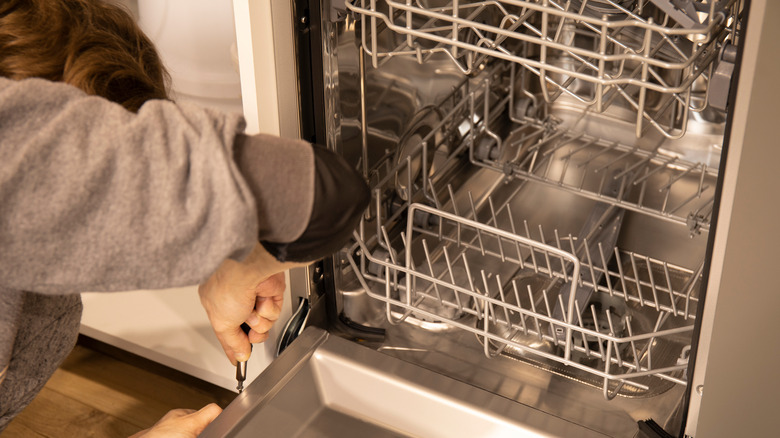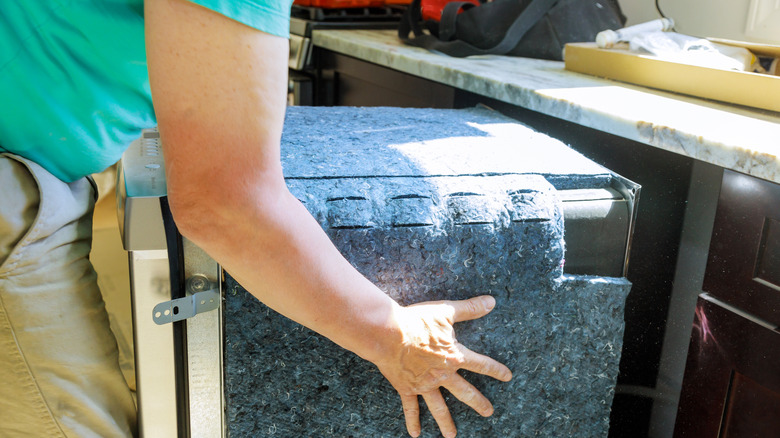How To Install A Dishwasher Without A Professional
Whether you're replacing an existing model or renovating your kitchen to add your first one, there are lots of reasons to invest in a dishwasher. Today's models are highly effective at cleaning even the most difficult, sauce-burned-to-the-bottom pots and pans. They can be more hygienic than handwashing dishes because their high temperatures kill harmful bacteria, including salmonella and E.coli. Not many people like to spend their time scrubbing the dishes either.
You may want to skip the cost of having a professional install it, though. The average cost of a dishwasher with installation ranges from $700 to $1,970, with labor costs making up as much as $350 of that. It's possible to install a dishwasher yourself if you are handy enough and don't mind a bit of plumbing work. This is particularly easy to do if you're replacing an existing model with a new one, however, if you need to run new water lines and drains, you may want to call a pro.
Remove the old dishwasher and prep the new one
After turning off the water supply and flipping the circuit breaker to the dishwasher, unscrew the front access panel near the floor to start the process of removing the appliance. From here you should be able to see the electric and plumbing connections. There's likely a terminal box where you'll need to remove the existing power cable.
Before you unscrew and pull off the drain hose, place a container just under the fitting to catch any water. You'll then be able to remove the drain hose itself along with the water supply hose. Unscrew the brackets that hold the dishwasher in place against your countertop, and pull the dishwasher out of the opening. It's a good idea to protect your floor before that final step with a towel or cardboard.
Read the manufacturer's instructions to know how to prep the new model for installation. Most come with all the plumbing accessories for a full installation. You'll need to install the new water supply valve and shut-off valve then use a piece of masking tape to hold the line in place to the floor, so it doesn't move when you position the dishwasher. Remove the old drain hose from the sink or garbage disposal line before positioning the new one provided in the installation kit. Be sure to hold that in place with tape on the floor as well.
Connect the new dishwasher
Push the new dishwasher into place and start to connect the lines to the dishwasher, reversing what you did to unhook the old model. Start by linking the water supply line — you may need a wrench for tightening the connector. Then, before doing anything else, turn on the water supply and look for any signs of leaks before you move further into the process.
Next, reconnect the drain hose and the electrical lines. Follow the manufacturer's directions for these steps since they can differ between models. At this point, you can safely turn on the electricity at the circuit breaker. Tap the power button to make sure everything is functioning, then you can tighten up the brackets that hold it into place in the cabinet. You may have to adjust the positioning to ensure its level before going around for a final tightening of the bracket screws. Finally, go through the operational setup provided by the manufacturer and learn to use it before running the dishwasher.


